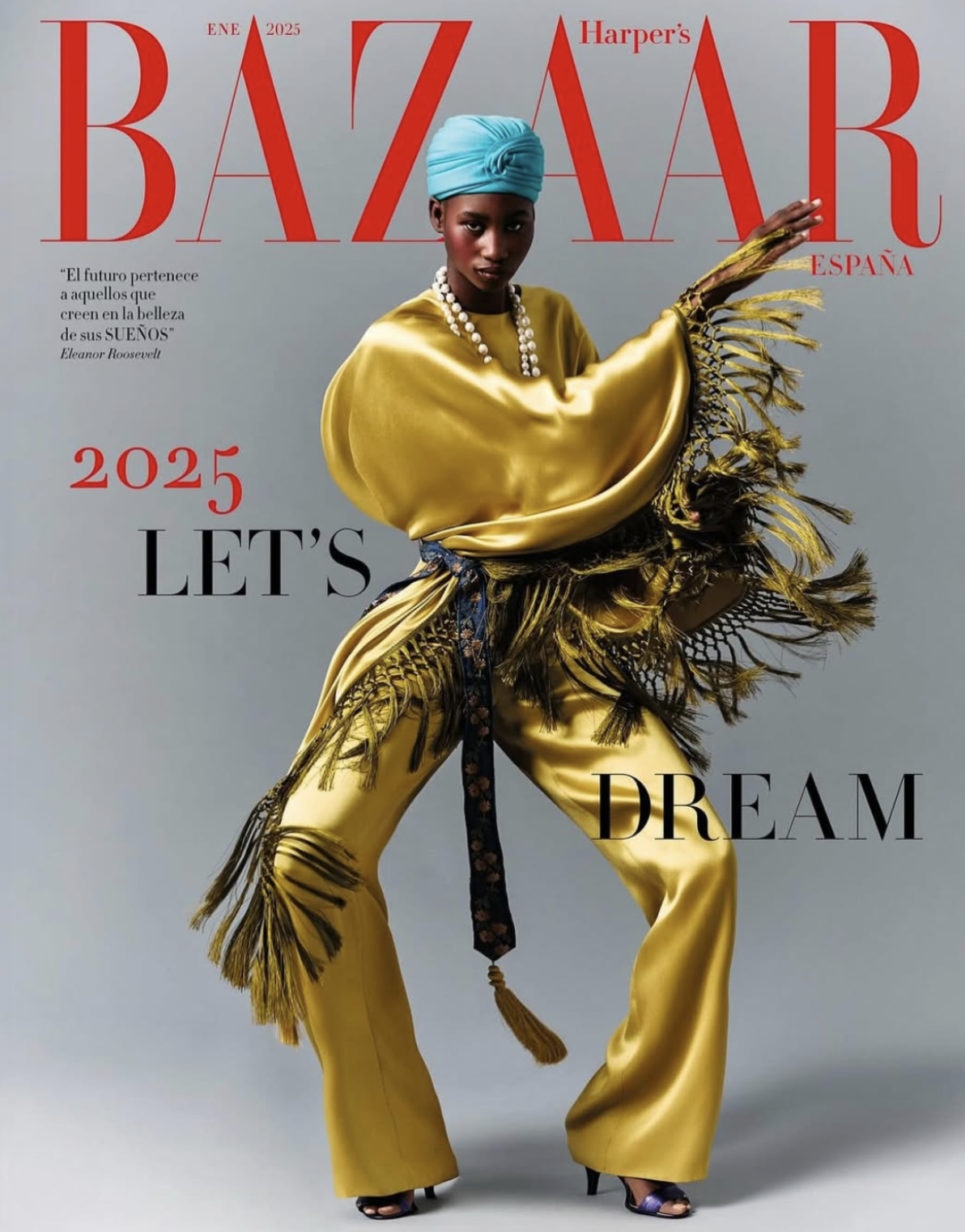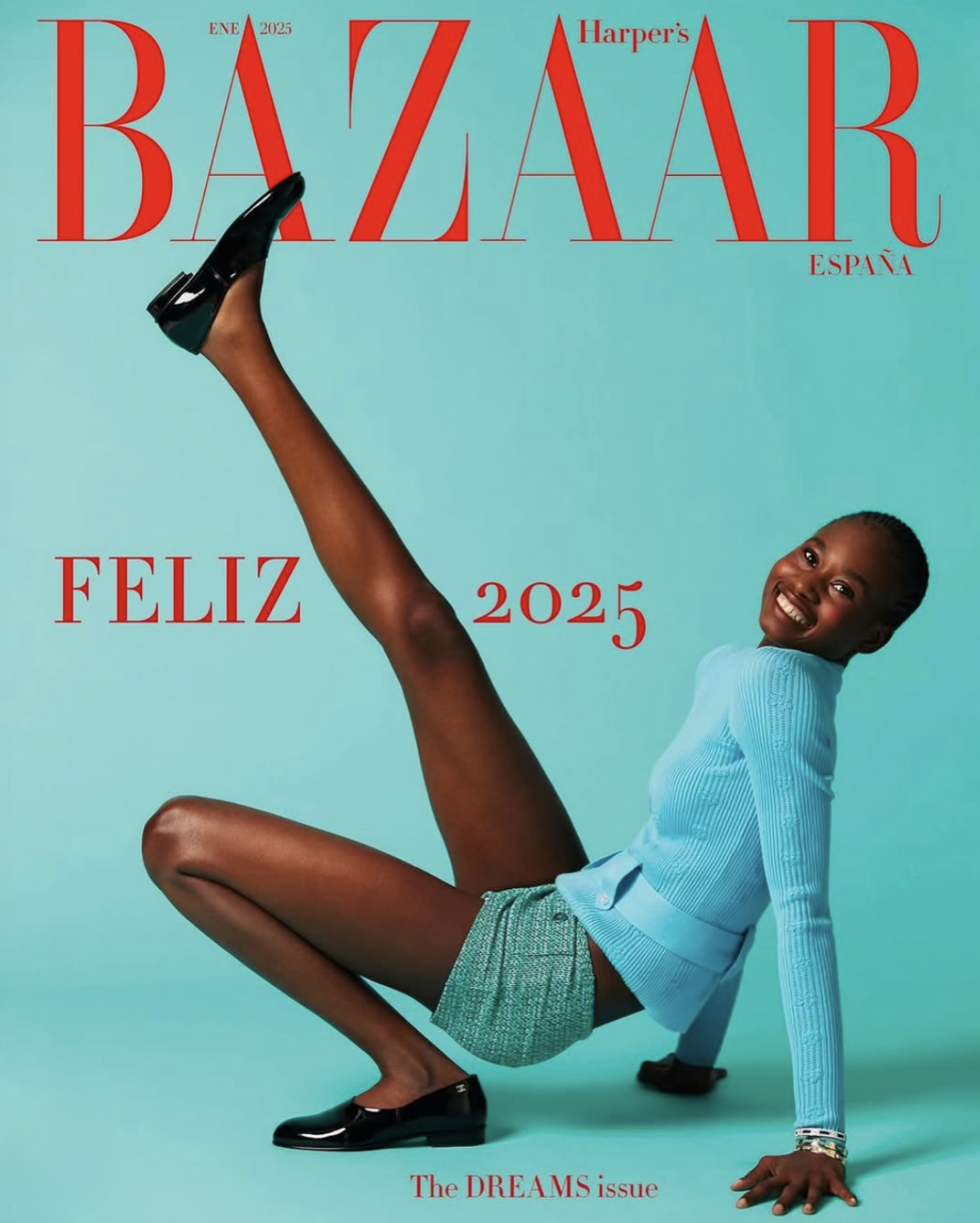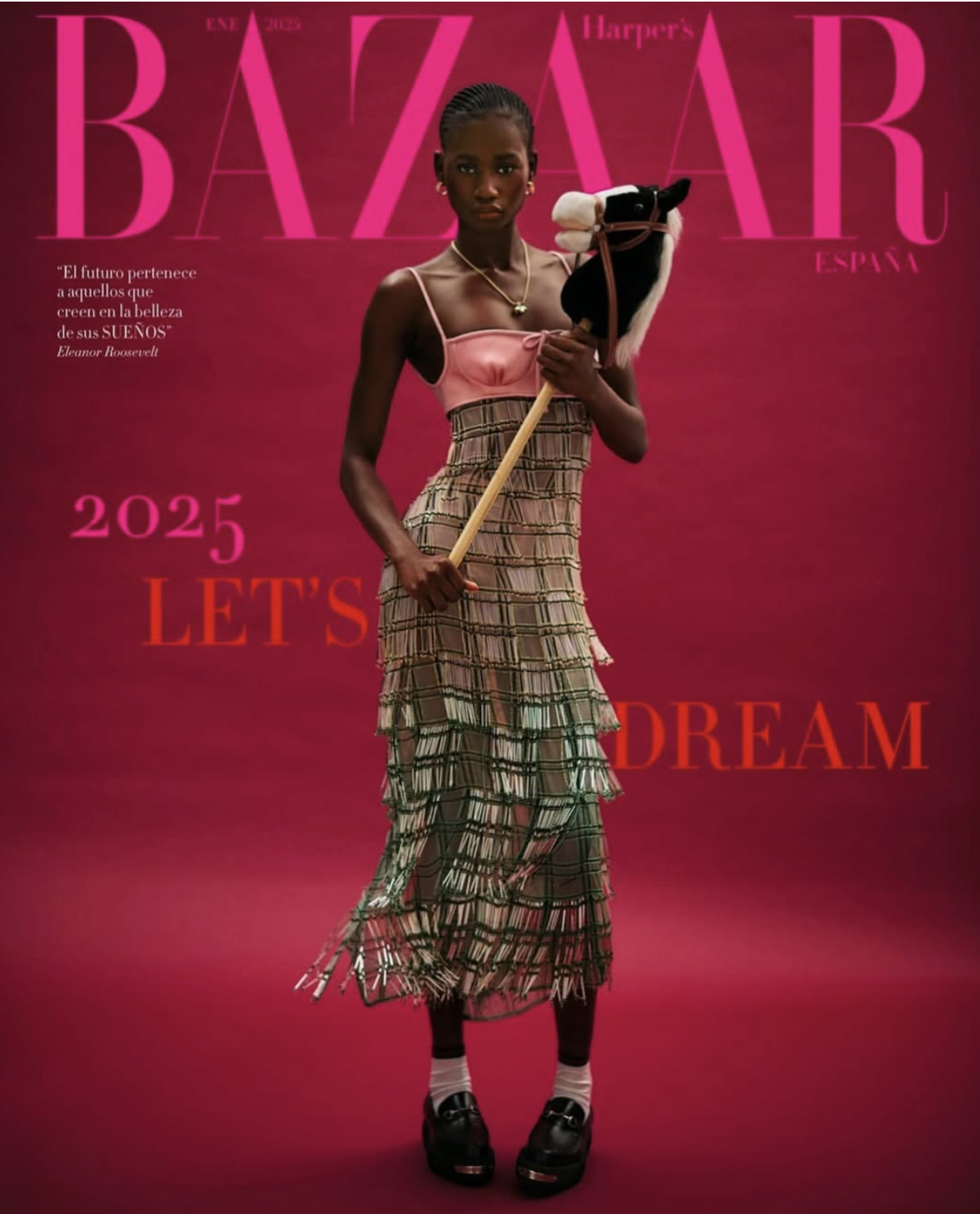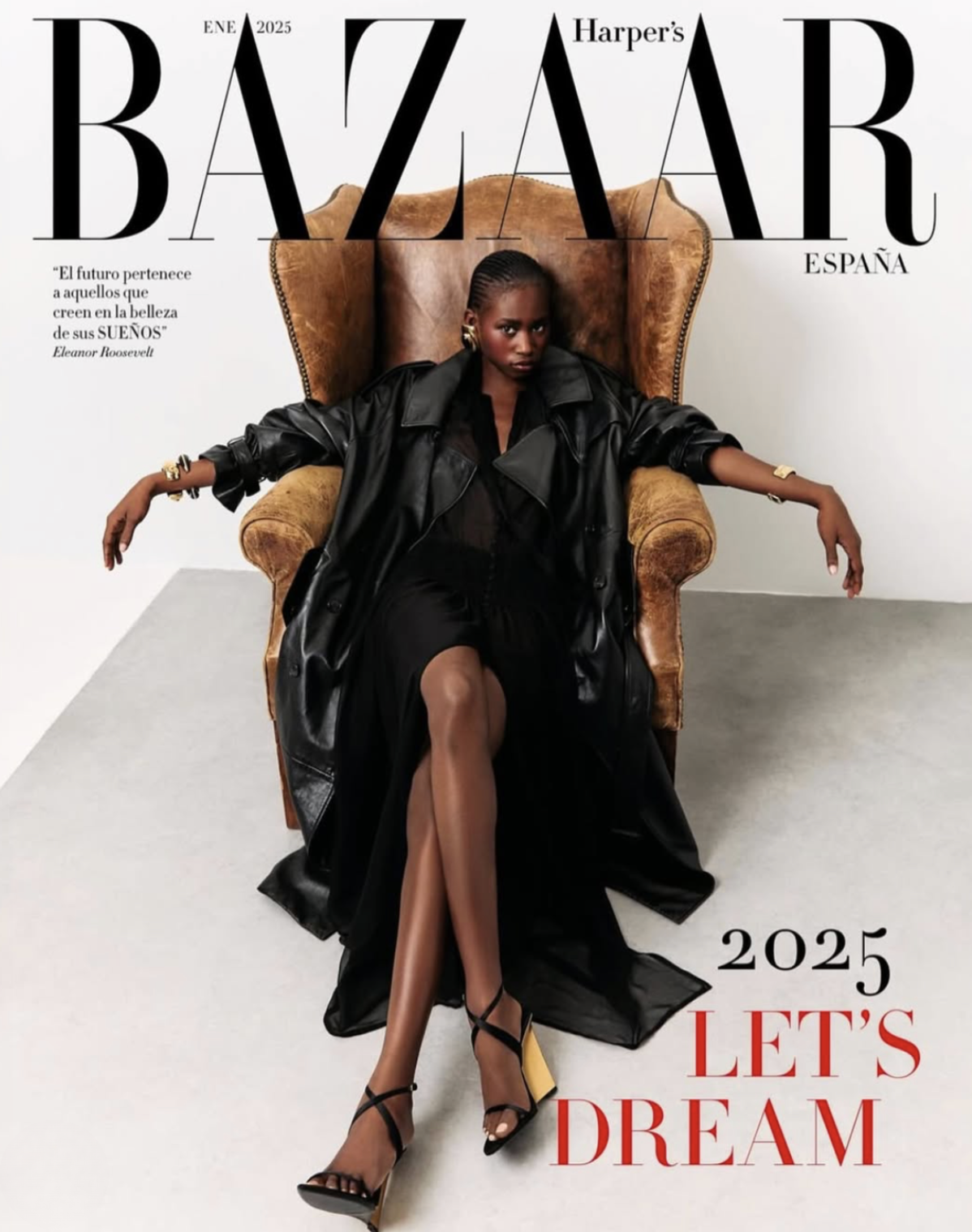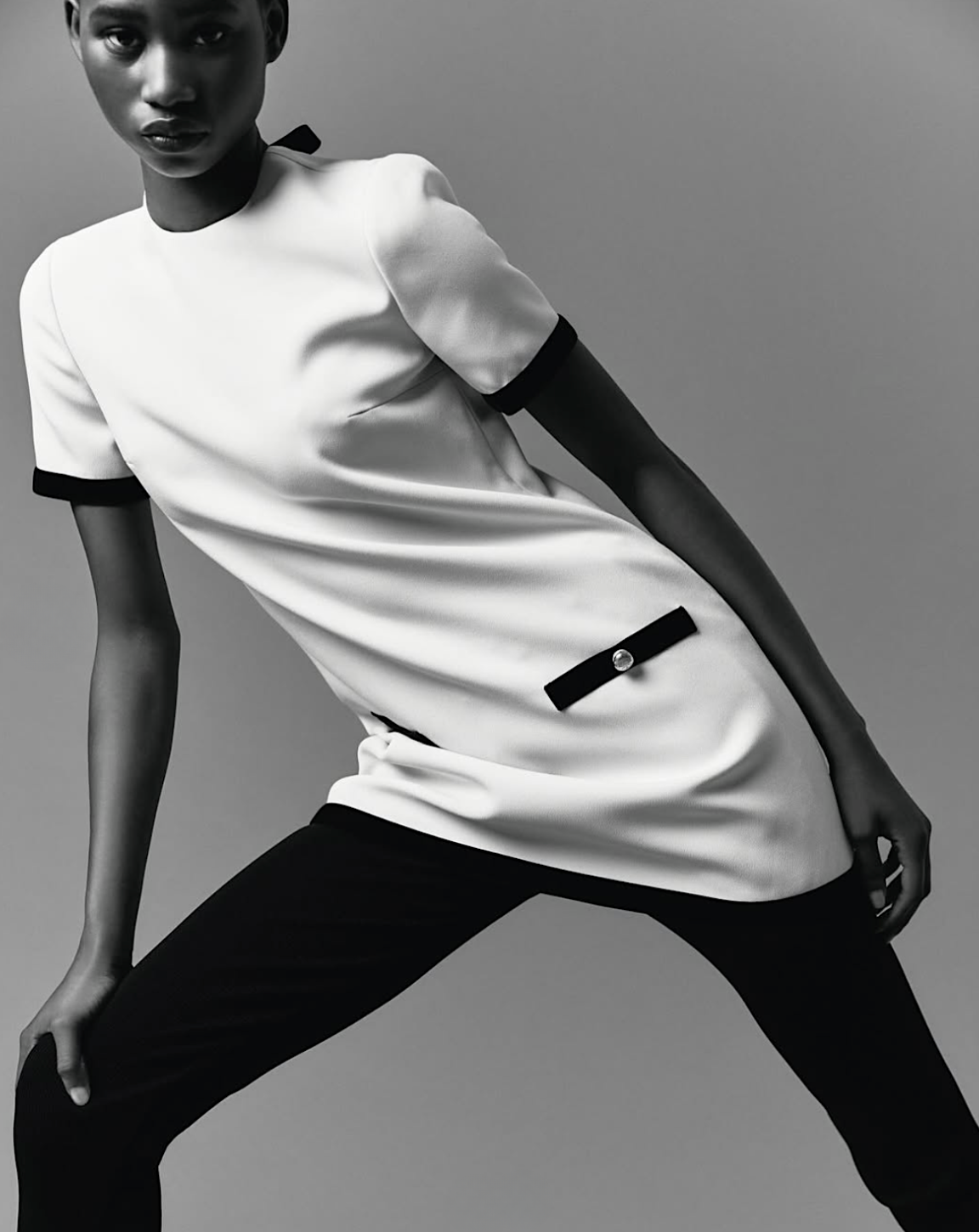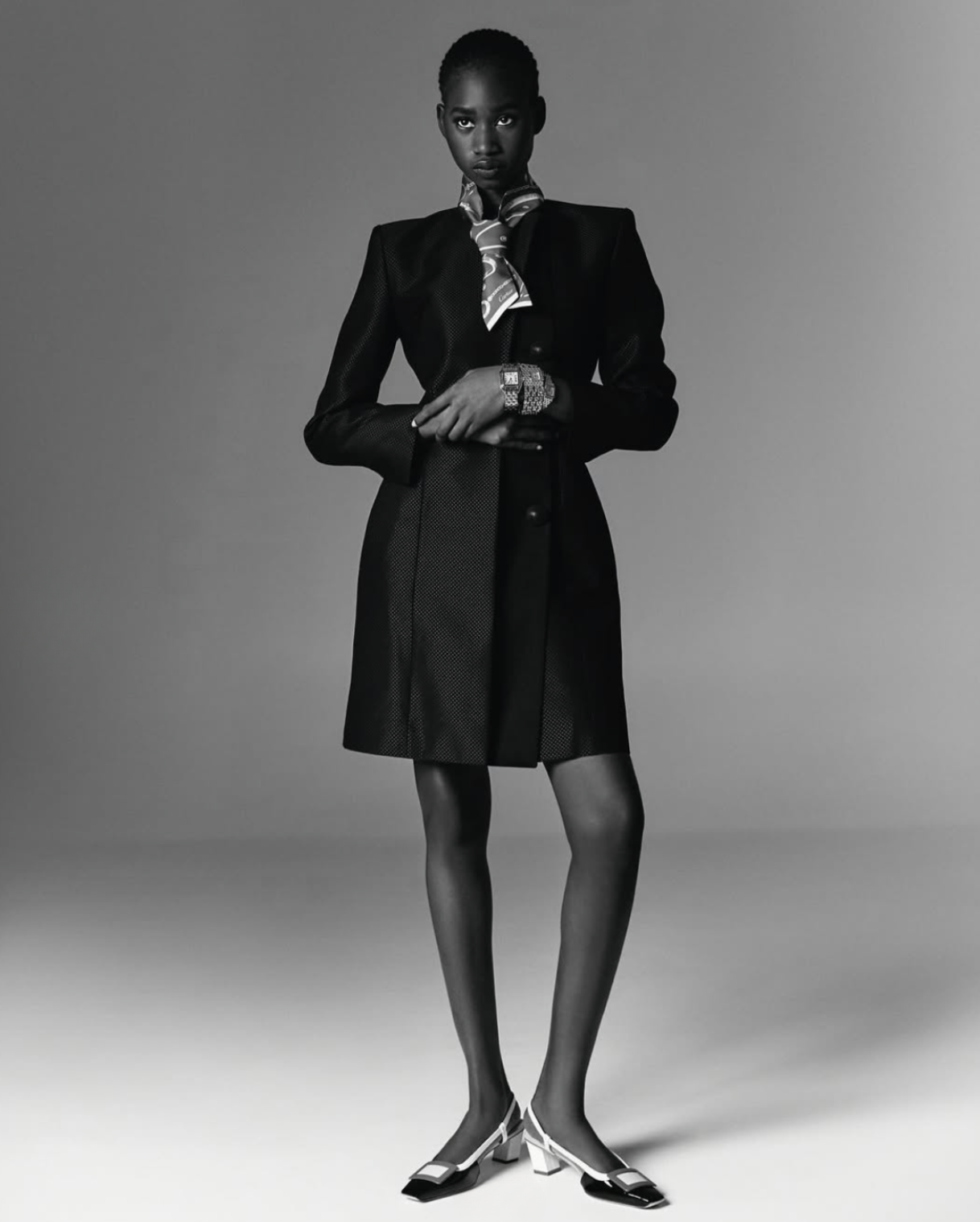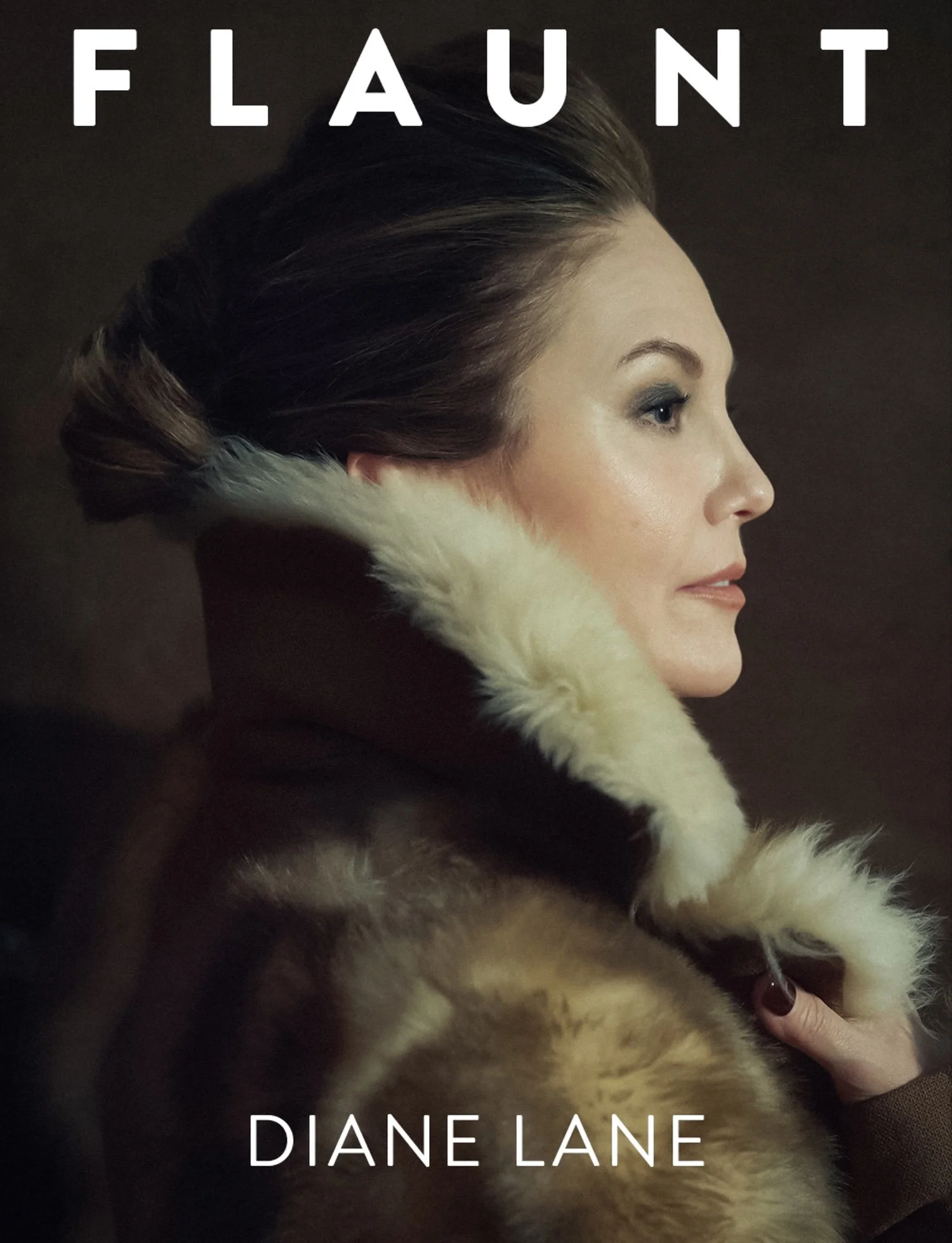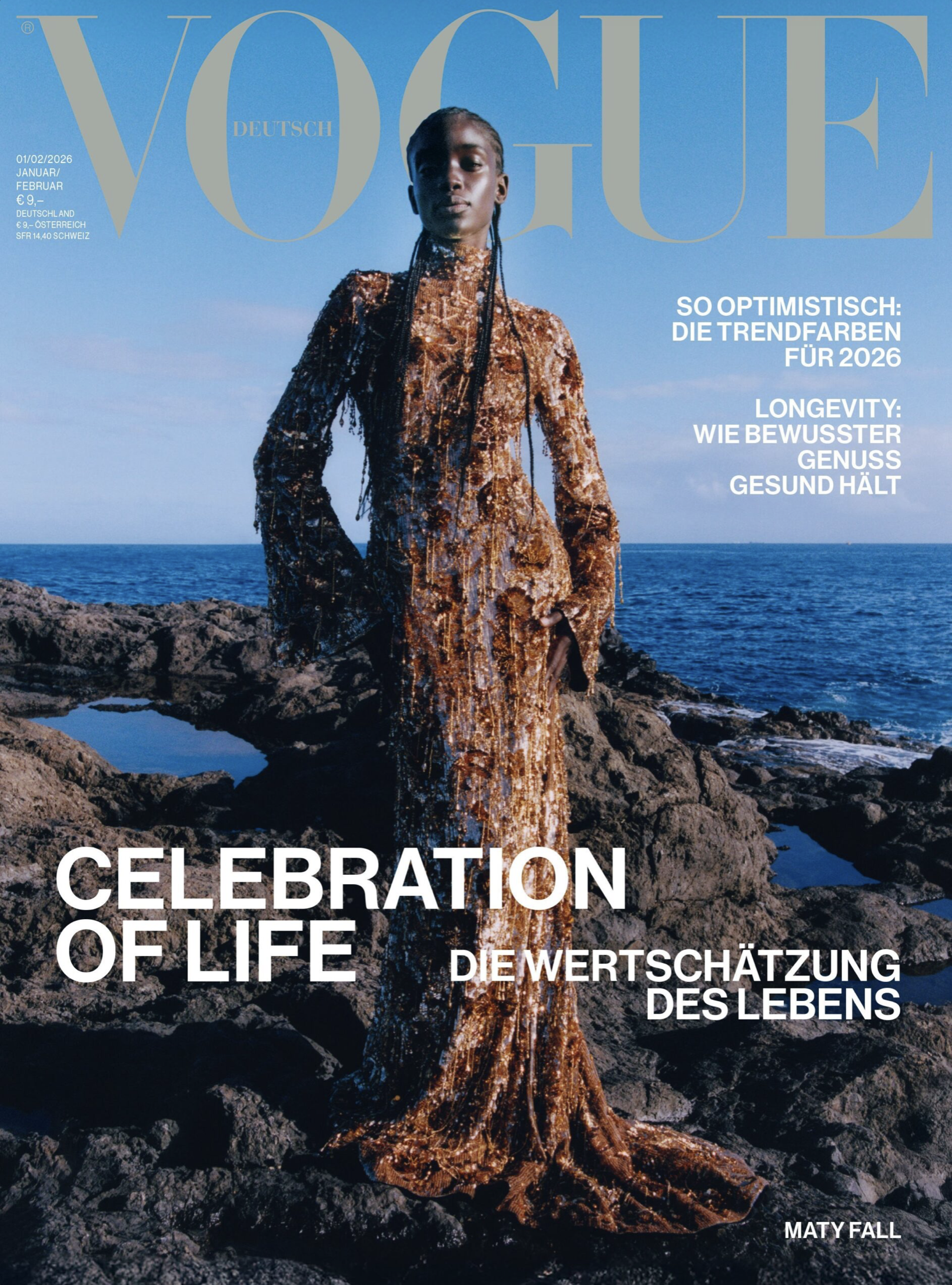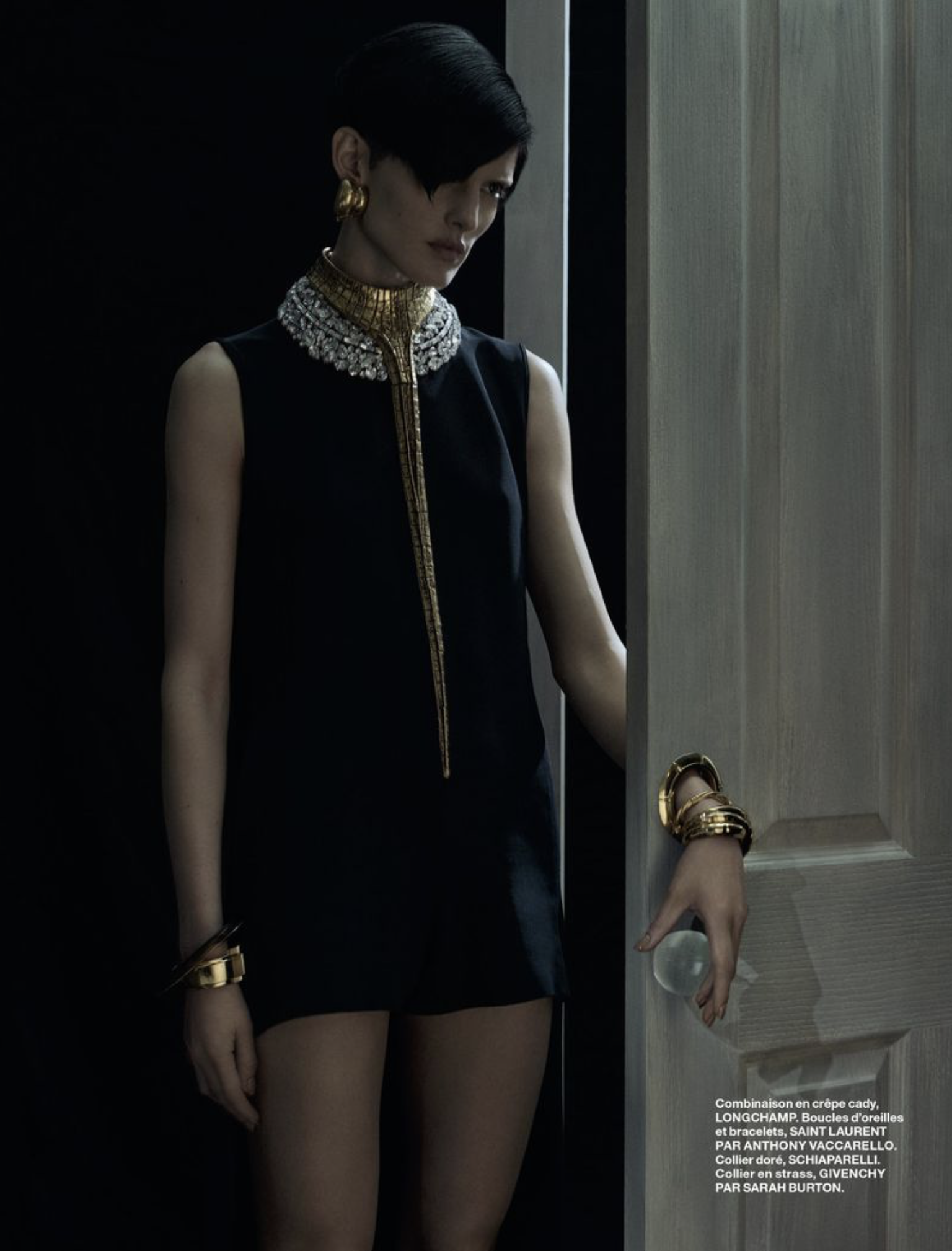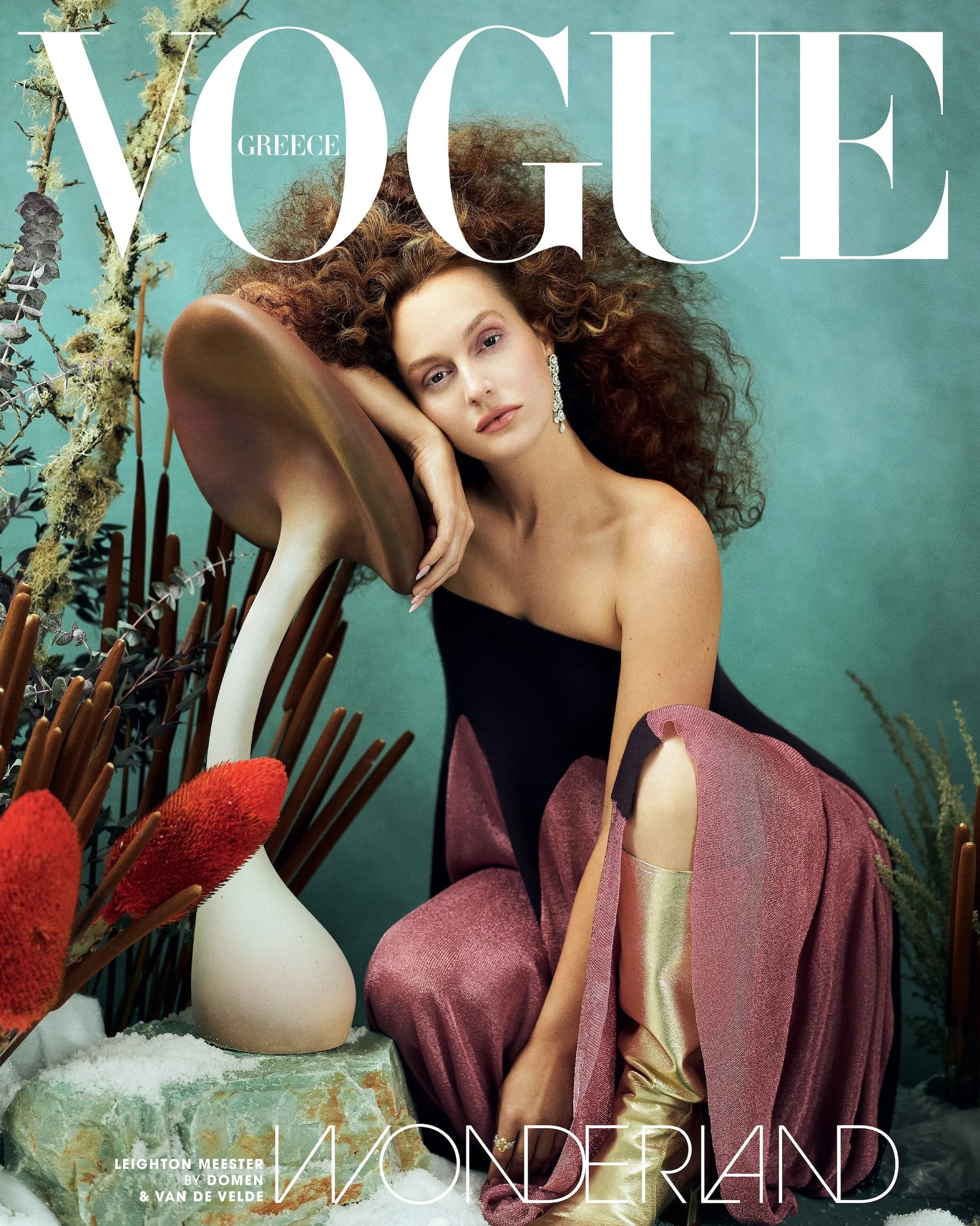Harper's Bazaar España January 2025: Dreams of Inclusion, Positivity and Justice
/“The future belongs to those who believe in the beauty of dreams,” America’s once First Lady Eleanor Roosevelt said. Her tenure as First Lady, from 1933 to 1945, coincided with the Great Depression and World War II, periods that demanded strong leadership and a renewed sense of hope.
The theme of Dreams is central to Harper’s Bazaar España’s [IG] January 2025 issue. Rising Nigerian model Mayowa Adagunduro carries the torch of strong sentiments expressed by Bazaar Spain, in an issue that goes far deeper than best new fashion looks for 2025, based on their introductory commentary.
Adagunduro is styled by Claudia Laukamp in images by Vladimir Marti [IG]. / Makeup by Raquel Alvarez Diaz
Designers attached to the four covers top to bottom are: [1] Maison Valentino by Alessandro Michele; [2] Chanel Official; jewelry from Roberto Coin; [3] Gucci; jewelry from Cartier and [4] YSL by Anthony Vaccarello.
Dreams Are Serious Business in Today’s World
Model Mayowa Adagunduro fulfills her dream of starring on her first cover in Spanish fashion media. The vast majority of us join Bazaar’s praise of her solid range of expression and poses on the four covers.
Bazaar goes deeper, though, and openly embraces words like diversity and inclusion at the very time these themes are under attack in America and elsewhere on the global fashion circuit. In their own sentiments, Bazaar Spain embraces themes of inclusion, positivity and a new and permanent fashion reality as their own Dreams.
A conversation I’ve been having lately is focused on the cynical view that inclusion and diversity are only temporal in fashion, that only a small number of fashion insiders really care about inclusion and diversity.
AOC believes that a much larger audience of fashion and design professionals working across the vast sector of our industry has no intention of burying this subject of racial inclusion — especially as pressure is bearing down on us politically in America to reject racial inclusion as the goal of a just society.
Bazaar’s choice of Eleanor Roosevelt is a maverick one, frankly, and AOC applauds them for this selection. Filling in with more of Roosevelt’s thinking around the power of dreams, we share elements of the fashion story that are already appearing on social media.
Speaking only for Anne of Carversville and myself personally, I intend to spend more time speaking of the reality that not all issues are created equally and belong under the social justice banner with equal emphasis.
My views are irrelevant to promoting the spirit of Bazaar España’s January 2025 issue with their emphasis on celebrating Mayowa Adagunduro and — more importantly — the magazine itself. For many of us — and clearly Bazaar Spain under its Editor in Chief Inma Jimenez Mateos, who is also Creative Director of Hearst Spain, there is clarity on the subject of race, social injustice and global history.
Mateos is planting a flag in this moment, and AOC respects her deeply for doing so. So let me give her an additional boost by sharing additional inspiration from a former First Lady at one of the most troubled times in global history ever.
I checked online to be certain a deeper conversation about Roosevelt wasn’t posted on the website. If it appears later, we will add the link.
Dreaming As a Catalyst for Transformation
Roosevelt understood that dreams are not just idle fantasies but essential blueprints for progress and change. Her emphasis on dreaming reflects a deep-seated belief in the power of imagination as a catalyst for transformation.
It highlights her conviction that the dreams individuals nurture today shape the society of tomorrow. Roosevelt's perspective was shaped by her experiences in advocating for human rights and her determination to create a better world, underscoring that dreams are intrinsically linked to motivation and action.
Her deep commitment to human rights and social justice resonated in an era transitioning from economic hardship to global conflict.
The 1930s and 1940s were marked by seismic shifts, both domestically and internationally. The New Deal, championed by her husband, President Franklin D. Roosevelt, aimed to revive the American economy, while Eleanor dedicated herself to addressing the human dimensions of these economic reforms. Her efforts extended beyond U.S. borders, as she worked towards fostering peace and understanding on the global stage.
Eleanor's belief in the power of dreams reflects the spirit of an age striving for progress and renewal. Her work in promoting equality and justice became a beacon of hope, inspiring many to strive for a better, more inclusive society. Through her words and actions, she left an indelible mark on history, embodying the societal transformations of her era.
Innovators like Thomas Edison, Marie Curie, and Martin Luther King Jr. pursued their dreams with relentless fervor, overcoming obstacles and skepticism to make significant contributions to science, human rights, and technology.
The impact of these dreamers extends beyond their achievements; they nurture a culture that values questioning the status quo and pushing boundaries. This culture fosters an environment where creativity thrives, leading to advancements that address societal challenges and improve quality of life. Dreamers drive innovation by challenging conventional thinking and exploring possibilities, often achieving breakthroughs in unexpected ways. In this way, those who believe in the beauty of dreams serve not only as architects of the future but also as the foundation for continuous societal evolution.
Resilience, Courage and Refusal
Resilience and courage are foundational elements in the journey toward realizing one's dreams. Resilience is the ability to withstand setbacks and challenges without losing sight of the end goal. Eleanor Roosevelt was relentless in reminding humans worldwide that resilience is the grit that keeps individuals moving forward despite obstacles.
In the face of adversity, resilience offers the strength to adapt and continue striving for one's dreams, transforming impediments into lessons learned.
With these qualities, you are better able to face challenges head-on, confident that each obstacle is simply a stepping stone toward success. Refusal is key to cultivating resilience and in a not insignificant way, that’s what Bazaar Spain is doing with their January 2025 issue.
Refusal to turn back inspires us to step outside comfort zones and confront fears head-on. Refusal inspires courage and fuels the initial leap of faith, that demands action from dreamers to act on their convictions despite uncertainties that involve potential failure and even death.
It emboldens individuals to trust in the beauty and worthiness of their visions. This is exactly what EIC Inma Jimenez Mateos is doing in this moment. Many more of us will be required to stand for our values in the coming years, and I expect racial justice to be front and center in this fight — along with an absolute rejection of feminism.
Politics in the Age of the ‘White Man’s Burden’
I never ever thought that I would read the words of British author Rudyard Kipling on The Washington Post, as a reflection of today’s problems-driven world. That phrase is the term “white man’s burden” — except they are also lumping the failures of modern women — thanks to feminism — as a new pillar of the “white man’s burden”.
We screw everything up — women and people of color — and white men have to come and fix it. These are the comments I am responding to — with humor and a lot of sarcasm, in fact.
You just didn’t hear such remarks but very rarely in recent decades. No more. For white men — many but not all — the gloves are off. And where this is all going, nobody knows.
Thanks, Bazaar España. Your Dreams commentary is nourishment for needy souls and spirits. And thanks so much also for bringing the legendary Eleanor Roosevelt into your perspective. That woman was a bad-ass, true-grit super-star lady of white privilege, btw. But she did good by the world. ~ Anne
